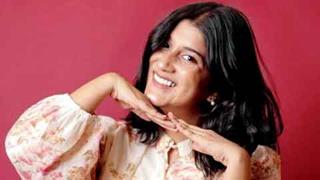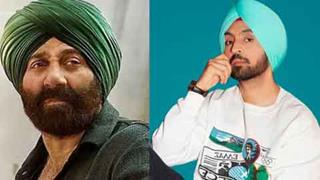The standing joke in the movie industry is: behind every successful director, there's a frustrated actor. And the
joke in the television industry is: behind every successful television star lurks a movie star.
But does the movement from the small to the big screen really work? And are TV stars really equipped to
make the transition?
The answer is a rather tragic no! TV stars have repeatedly burnt their fingers in trying to make the crossover. A
classic example is Amarr Upadhyay who became a household name as Mihir, the heir of the Virani empire in
"Kyunkii Saas Bhi Kabhi Bahu Thi".
After tasting the kind of success that had never been accorded to a male TV star, Amarr suddenly developed
starry aspirations. He wanted a bigger screen to play with. Dropping his small-screen identity and oodles of
weight, Mihir strutted around as a big screen wannashine.
After two disastrous feature films - "Dhund" and "Wah Wah Ramji" - he is back to square one. But television
doesn't seem to want him any more either.
One of Upadhyay's film directors said: "Amarr started developing starry qualities even before his first film was
released. He asked for Rs.3.5 million, which is ridiculous for a newcomer, and threw his weight around. No
wonder he was thrown out of movies.
"The problem with TV stars is they take the example of Shah Rukh Khan to be enough evidence of an actor's
ability to make the transition. But when Shah Rukh Khan did `Fauji' and `Circus' on TV, there was only one
channel on air. Today, 55 channels see a TV star across the globe. He's over-exposed even before he hits the
big screen."
This bitter truth is being realised by more and more small-screen stars as they abandon their comparatively
cushy careers on the home medium to lunge for the pie in the sky... and get badly battered and beaten in the
process.
The most bitter example of an actress who lost the battle on both the idiot box and the Bollywood mould is
Kartika Rane.
A fairly successful television actress, she was promised the lead in a lavish period film set during the British
Raj directed by Vikram Bhatt with Anil Kapoor in the lead.
Before she knew it, she was neither here nor there. Today Kartika is a forgotten chapter in Indian television,
and a warning to other aspiring wannabes like Shweta Tiwari, who plays the popular Prerna in Ekta Kapoor's
"Kasauti Zindagi Kay".
Shweta jumped mediums briefly to play Bipasha Basu's best friend in the flop thriller "Rakht". However,
realising her mistake, she quickly jumped back to TV in time.
While earlier every TV star saw the portable medium as a stepping stone to celluloid stardom, today the
scales have tilted.
The average household icon seems to have learnt its lessons well from the mistakes made by other wannabes
from television like Parmeet Sethi, Renuka Shahane, Shekhar Suman and Mandira Bedi, all of whom lost their
promising careers on television in their endeavour to reach out to a larger screen size, if not exactly a larger
audience.
Currently, the two most popular female icons on TV - Smriti Irani-Malhotra and Sakshi Tanwar - can proudly
say they are the products of television. Neither of them is eager to grab film offers just for the heck of it.
Irani speaks for both when she says: "Sure, I'm getting offers for movies. But I can't and won't accept any and
everything that comes my way.
"I've a certain standing on television. People look up to me as someone in a position of authority. How can I
mess with their expectations just to play some heroine's mother or bhabhi?"
Clearly, Tanwar and Irani see themselves as products of the home-viewing medium.
"There's certainly nothing downmarket about television any longer. In fact, a movie comes on Friday and is
forgotten in a few months at the most. On TV, you're right there in the audiences' face for years. We really
can't underestimate the medium," says Irani.
Jasmeet Wallia, better known as TV's icon Jassi, too has her own take on the importance of television.
"The medium has made me what I am today. How can I abandon it to act in movies? I'm open to movie offers,
but not at the expense of the medium that has made me."
For every Jassi or Tulsi who's more than happy being a TV icon, there's an Anita Kanwar, whose image as
Lajo-ji from Doordarshan's hugely successful "Buniyaad" throttled her histrionics.
She made sporadic attempts to migrate to the bigger medium, especially in Amol Palekar's "Thoda Romani
Ho Jayen", but to no avail. Till the last, Anita remained Lajo-ji for audiences.
Navneet Nishan too got typecast as Tara from the immensely popular soap of the same name. Her efforts to
become a large-screen actress were restricted to comic roles in Dharmesh Darshan's cinema or as Saif Ali
Khan's super-bitchy mom in "Kya Kehna".
Beyond "Tara", her talents remained unrecognised even on television where she made tentative efforts to
establish herself.
The gifted Pankaj Kapoor is still known as detective Karamchand in Pankaj Parasher's series, although he
has now moved on to the celluloid glory of Vishal Bhardwaj's "Maqbool".
Kapoor somehow cannot get away from the image of the carrot-chewing detective that he acquired decades
ago.
TV stars work under the fear of being typecast. But there's little they can do about it. Any effort to build an
alternative career on the more affluent medium is most of the time knocked down.
The talented Anoop Soni, who got recognition on television serials like "Saaya" and "CID", made a number of
attempts to infiltrate cinema. But no luck; he's back on television hoping to re-establish himself.
Anoop has the last word on the subject: "Television has great things happening on it. It has more variety than
cinema can ever offer. However, quality-wise Indian television still has a long way to go."
Can TV stars make it on the big screen?
Tuesday, May 10, 2005 13:40 IST


















